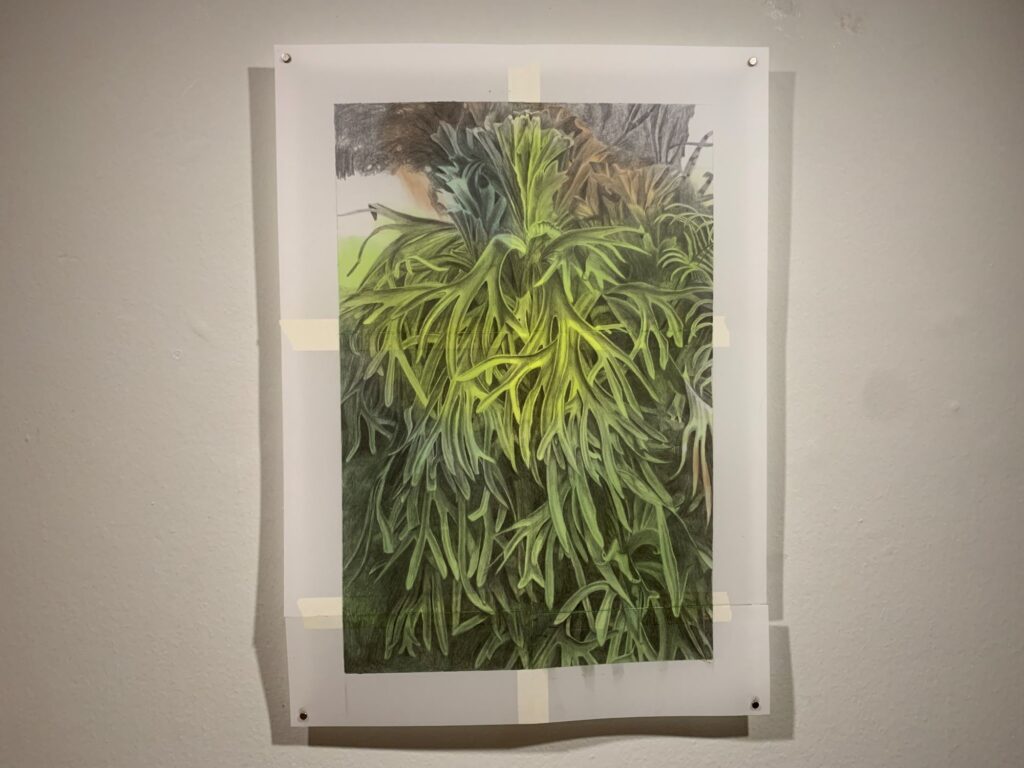
When James Lowther, head of visual arts for The Maltings (Berwick) Trust, visited Matilda Bevan’s studio near Hexham, Northumberland, he asked which artists had influenced her.
Immediately she mentioned Thomas Hennell so plans were laid for an exhibition in Berwick’s Granary Gallery that would include his work and her artistic responses to it.
There could be no mutual interaction because Hennell was reported missing, presumed killed, when serving as an official war artist in Java, Indonesia, in 1945.
He was 42 and hadn’t had a trouble-free life, having spent three years in a psychiatric hospital in the early 1930s (among the many institutions with examples of his work is the Bethlem Museum of the Mind in London, which specialises in the history of mental health care).
But if he had lived he would surely have gone on to become much better known than he is.
- Read more: Puppets on parade in Newcastle once again
- Read more: Capturing the 1996 Toon Army in black and white
The Berwick exhibition will be an introduction for many to both these artists whose delicate and painstaking works are displayed together, those of Hennell on loan from the Victoria & Albert Museum, Darlington Borough Council and a private collection.
A display case contains memorabilia including a copy of Hennell’s self-illustrated book Change in the Farm, published in 1934 and subtitled, “A record of rural industry in the days when farming was an art and the craftsman had not yet been ousted by the machine”.
It was loaned by Newcastle-born writer and art historian Jessica Kilburn whose own lavishly illustrated book, Thomas Hennell: The Land and the Mind, was published in 2021.
Hennell, who was born in Kent and studied, then taught art, spent a lot of time cycling through the British countryside, recording the endangered rural crafts which feature in his book.

It made him a natural in the early years of the war for Recording Britain, a project set up by Sir Kenneth Clark, director of the National Gallery, to depict rural scenes under threat.
After the war, the complete collection — more than 1,500 watercolours and drawings by artists including Thomas Hennell — were given for safekeeping to the Victoria & Albert Museum.
One of them you’ll see here, a beautiful Hennell watercolour titled Beech Avenue, Lasham, commemorating in 1941 a scene soon to vanish under a new aerodrome.

Matilda Bevan immediately warmed to an artistic kindred spirit when she first encountered Hennell about 15 years ago.
“I picked up an auction house catalogue and saw this watercolour that was so distinct and unlike any other early 20th-century watercolour in Britain that I’d seen. I was fascinated and had to find out more.
“I found out where Thomas Hennell’s work was on show and what the history of it was and became fascinated by him as a person, too, because he had had so many challenges in his life.”

As for the particular appeal of his work, it’s pretty self-evident if you see the exhibition, she says: “I think he had a very clear sense of colour, what was the right colour to use in a particular painting for a particular space.
“He just had a natural instinct for that and his drawings were very strong and clear.”
Matilda already had an interest in hand crafts such as drystone walling, a sculptural feature of the rural Northern landscape, so didn’t come to that through Hennell.
“But that’s another thing that attracted me to his output, that he was interested in that sort of thing as well.”

Their work complements each other beautifully although their approaches were different, as Matilda points out.
Whereas she paints principally in oils that can be worked and reworked, Hennell used the more fleeting medium of watercolour.
- Read more: You’re doing alright, Jack
- Read more: The Brontës as not taught in schools
He would have worked mostly outdoors on the spot whereas Matilda makes notes and takes photographs before returning to her studio, although she adds that his watercolours were obviously very carefully considered.
One Hennell watercolour, done when the artist was very young and indoors in the warm, is called Hodsoll Street Bakery. It shows a baker in front of a blazing oven and rows of freshly baked loaves that you can almost smell.

Of his work, poignant as well as beautiful, Matilda says: “I think so much of his work comes from a conscious sense that he was recording something that was coming to an end.”
There’s added poignancy in the knowledge of his own premature end, a wartime death assumed but never absolutely confirmed.
Matilda’s contributions to the exhibition include a wall of what might be described as landscape miniatures, their pinkish tinge emphasising that for all its beauty there’s a man-made artificiality to the Northern landscape.

And there are some delicate drawings, including one called I Heard You (In Memory of Thomas Hennell) featuring a plant from Java which in this country is known as a staghorn fern but perhaps sounds more romantic in Indonesian.
Matilda, who was born near Edinburgh, had spent time in Ireland, Sussex and London before settling in Northumberland 11 years ago. She says she finds it a congenial place to live and work.
Next for her is a group exhibition in Amble in May called Rooted. Through Thomas Hennell, she says, she has become interested in agriculture and hopes a farmer at Embleton will grant access to the visual material she requires.
In the meantime, Matilda Bevan: Vein, which also includes a film of Matilda in her studio, can be seen at the Granary Gallery, Berwick, until May 5. Visit the website for more information.











